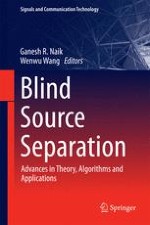2014 | OriginalPaper | Buchkapitel
13. Monaural Speech Enhancement Based on Multi-threshold Masking
verfasst von : Masoud Geravanchizadeh, Reza Ahmadnia
Erschienen in: Blind Source Separation
Verlag: Springer Berlin Heidelberg
Aktivieren Sie unsere intelligente Suche, um passende Fachinhalte oder Patente zu finden.
Wählen Sie Textabschnitte aus um mit Künstlicher Intelligenz passenden Patente zu finden. powered by
Markieren Sie Textabschnitte, um KI-gestützt weitere passende Inhalte zu finden. powered by
